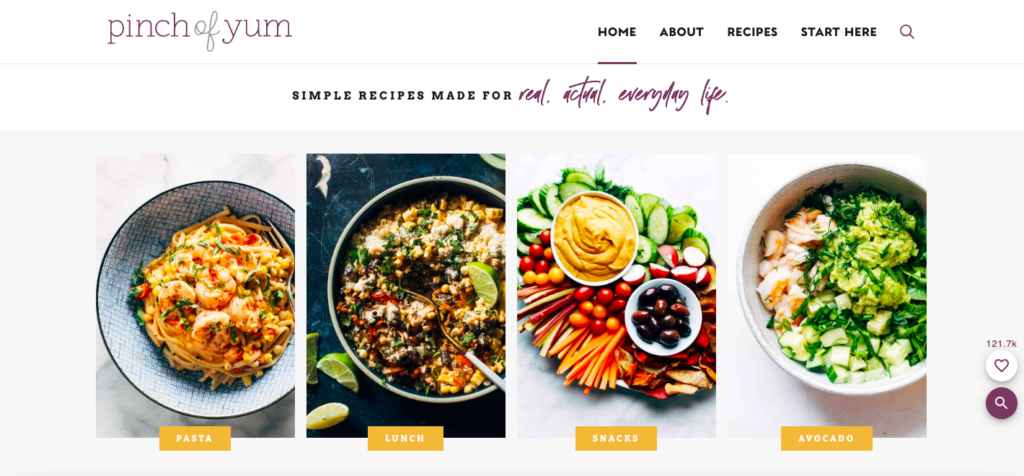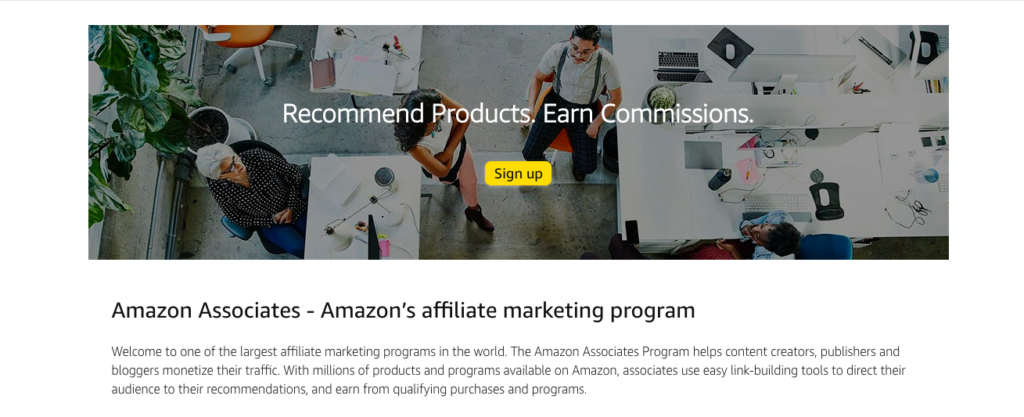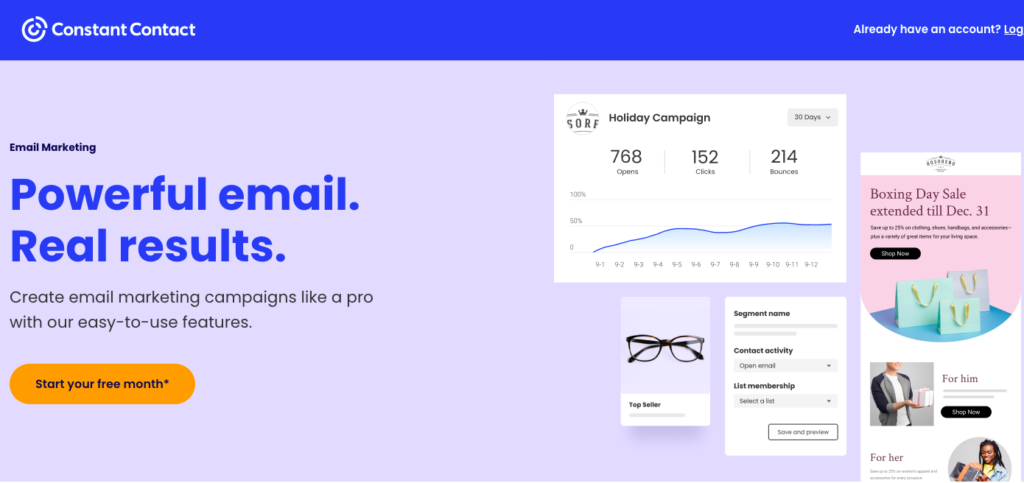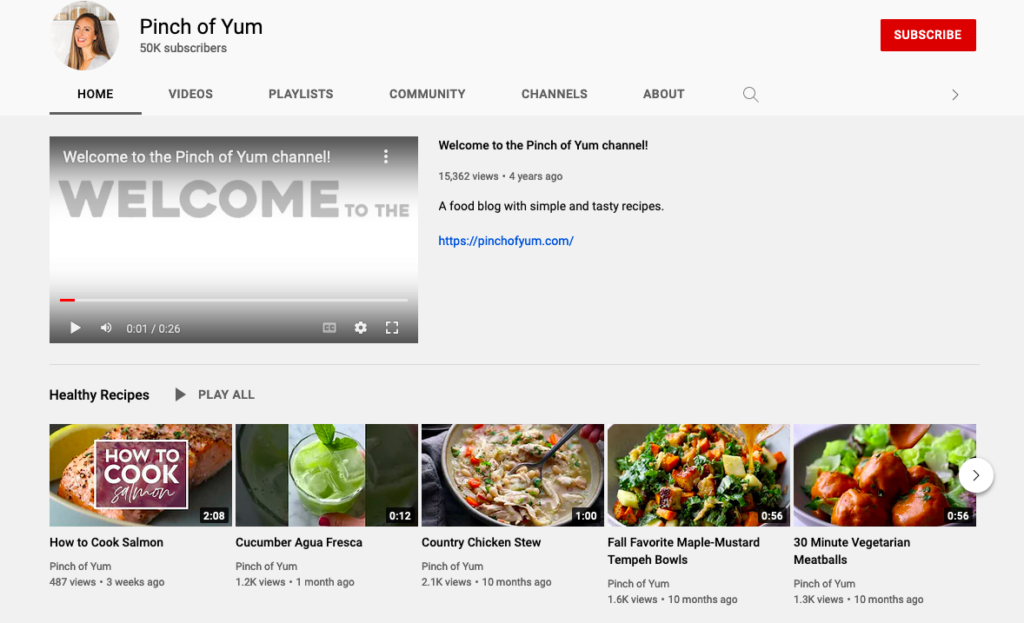Have you ever wondered if it’s possible to make money at blogging, and get paid to blog! For most people, the words “blogging” and “career” don’t really go together. However, there are tons of bloggers who’ve turned their blog into a lucrative side hustle or even a full-time job.
(And no, it doesn’t require scamming anyone or doing anything dishonest – there are plenty of 100% legitimate and legal ways to get paid to blog).
For many people, a blog is just a fun side project they do in their free time. If that’s the case for you, then there’s nothing wrong with that!
But if you’ve been wondering how to get paid to blog, this guide will explore different ways you can turn your blog into a source of income.
Summary: How can I get paid to blog?
- There are a ton of ways to monetize your blog and make money as a blogger.
- These include earning money from ads on your blog, putting affiliate links in your blog posts, making deals with brands for sponsored content and reviews, selling your own original products, and more.
- You can also think outside the box and branch out with monetized YouTube content, podcasts, paid newsletters, and more.
How to Make Money as a Blogger in 2025
First and foremost, let’s get this out of the way: making money as a blogger is a marathon, not a sprint. You aren’t going to get rich overnight from blogging, so if that’s what you’re after, you’ll need to start thinking of a different plan.
However, if you’re willing to put in the time and effort, blogging can be a personally, socially, and financially rewarding experience. With that said, let’s get into how you can position yourself to start earning money from your blog.
Choose the Right Blogging Niche

A blogging niche is a general category or topic your blog focuses on. A niche can be broad (such as travel), or it can be more narrow (such as model airplane building).
It may go without saying, but some blogging niches are more profitable than others.
Lifestyle blogging? Majorly profitable. Food blogging? A potential goldmine. Blogging about 18th-century Russian literature? … probably not going to replace your day job anytime soon.
If your only goal is to blog about what you’re passionate about, then who cares if it’s profitable? Just have fun, and enjoy the opportunity to connect with like-minded people all around the world.
However, if your goal is to eventually make a profit off of your blog, then you need to pay careful attention to the niche you choose. As of 2025, some of the most profitable niches are:
- Food and cooking
- Travel
- Personal finance and investment
- Parenting and “mommy blogging”
- Arts, crafts, and DIY
- Health and fitness
- Fashion, beauty, and self-care
- Gaming and tech
- Sustainability and green living
If any of these sound like something you’re interested in, great! You’re already on the way to starting a blog.
If, on the other hand, none of these seem like the right fit for you, don’t worry: the blogosphere is a rapidly changing place, and choosing a top-trending niche for your blog definitely isn’t the only key to making a profit as a blogger.
You can think of a niche as an ecosystem: some are bigger than others, but that doesn’t mean there’s no benefit to being a part of a smaller one.
In fact, niches that aren’t already overcrowded present a unique opportunity: with less noise and competition, your blog has a better chance of standing out from the crowd.
The key is striking a balance: you don’t want to blog about something so specific that it will never appeal to a broader audience, but you also don’t want your blog to be identical to thousands of other blogs.
Write Sponsored Content

One of the easiest ways to get paid as a blogger is to write sponsored content. Sponsored content is when a brand or company pays you to write about or review its products.
For bloggers, particularly those with a fairly large audience and/or social media presence, sponsored content is a huge source of potential income.
If you want to get in on the action, reach out to brands that are related to your blog’s content and ask them if they’d be interested in sponsoring a post or review on your blog.
With so many people engaging with products first and foremost through social media, brands are eager to get their products into the hands of influencers and bloggers who can “social proof” them – that is, who can offer testimonials and recommendations that their followers trust.
In fact, if you build up a large enough following, brands will likely start reaching out to you!
Sponsored content is still a bit of a legal gray area, so to avoid getting in any trouble, make sure that you always disclose in your posts when you’ve received money from a brand or company whose product you’re blogging about.
It’s also important to remember that your audience’s trust in you is the thing that keeps them coming back to your blog. To maintain and honor that trust, you must be honest about the products you review.
If you’re a beauty blogger and a face cream that you’ve received money to review causes your skin to break out in hives, you should mention that in your review.
In other words, being truthful about the good and the bad of the products you’re paid to review will pay off in the long term in the form of a growing audience.
Add Affiliate Marketing Links

Affiliate marketing links are one of the best and easiest ways to make money as a blogger.
With affiliate marketing, you recommend a product to your audience and include a link to where they can purchase that product. When someone clicks on the link on your site to purchase the product, you receive a commission from the sale.
To put affiliate marketing links on your blog, you need to join an affiliate marketing program.
One of the most commonly-used affiliate marketing programs is (surprise, surprise) Amazon Associates, Amazon’s affiliate marketing branch, which allows you to earn up to 10% commission from products bought through your custom link.
Considering how many consumers prefer the ease of doing their online shopping from Amazon, signing up with Amazon Associates can be a great way to make money for your blog.
However, it’s far from the only affiliate marketing network out there: Pepperjam, Conversant, ShareASale, and Awin are other great options.
While affiliate marketing programs like Amazon sell an almost unbelievably wide range of products, you can also consider affiliate marketing opportunities that are specific to your blog’s niche.
For example, if you’re a food or cooking blogger, many grocery retailers, such as Safeway, also have affiliate marketing programs you can sign up for.
If you’re a fashion blogger, the major fashion retailer Fashion Nova also offers partnership opportunities in the form of affiliate links and sponsorship deals.
Affiliate marketing is a rapidly growing field, and just like with sponsored content, it’s important to be transparent with your audience.
If you’re writing a blog post containing affiliate links, make sure you disclose this information directly, either at the beginning or the end of your post.
Earn Money Through Ad Placement
Like affiliate links, ad placement is another way that you can get paid to let brands sell their products on your blog. There are two ways to get ads placed on your blog, both of which have their pros and cons.
1. Use an Ad Placement Program Like Google Adsense
This is the most common way that most bloggers earn money from ad placement on their sites. Here’s how it works: you sign up with an ad placement network, and they take care of selling empty space on your blog to companies eager to get their products in front of the eyes of your audience.
Google Adsense is the most widely-used ad placement program, and one of the reasons why it’s popular is because it’s fairly easy to get accepted and start earning revenue from ad placement.
The best alternative to Google Adsense is Ezoic, another ad placement program that offers AI-powered SEO ad placement that can actually help drive new traffic to your site.
Other ad placement programs, such as Mediavine, Adthrive, and Media.net, are more discerning: they’ll only work with blogs and websites that already have a certain amount of traffic and/or unique visits per month.
However, if your blog meets the requirements, signing up with one of these ad placement services can come with major financial rewards: not only do they generally offer a higher percentage of the ad revenue to bloggers, but many of these services also curate their ads to fit with your specific niche, making the ads blend seamlessly with your blog’s aesthetic.
If you’re interested in earning money from ad placement on your blog, you can find a full list of the best ad placement services here.
2. Reach Out to Companies Directly
Another option for getting ads placed on your blog is to contact companies related to your niche directly, ask if they’d be interested in buying ad space on your blog, and negotiate a deal with them for the price.
This takes a considerable amount of industry know-how, not to mention that in order for companies to find your offer attractive, your blog will need to be attracting a considerable amount of traffic every month.
Making an advertising deal with a company directly is definitely more difficult, but it can be worth it financially. Since you’re cutting out the middleman (the ad placement programs), you can end up with more money in your pocket.
No matter how you do it, selling ad space on your blog is one of the best ways to earn a passive income without needing to put in much extra effort – all you need to do is generate traffic, which is likely already your goal!
Sell Your Services
One way you can think of your blog is as an online extension of your skills. As in, if you’ve created a blog to showcase your food photography, chances are you’re a pretty good food photographer, right?
When you blog about a specific topic, your audience sees you as an authority in your field. In this way, your blog becomes a place to showcase your knowledge and abilities, and you can sell your services to interested viewers.
I gave the example of selling your services as a professional photographer, but this is hardly the only service you can offer. Popular services that you could sell include:
- Consulting in your area of expertise (finance, fashion, marketing, education, etc.)
- Website design and/or graphic design
- Web developing
- Freelance writing/copywriting
- Private lessons and/or online classes and workshops
Of course, this is a more time-consuming way to earn money from your blog since it requires you to take the time to actually deliver the services you’re selling!
However, if you have the time and are looking to eventually turn your blogging hobby into a full-time career, selling your services on your blog is a great way to earn money while increasing your audience and your reputation in your field.
Set up an Email List

As you’ve probably noticed by now, all of these different ways of getting paid to blog have one thing in common: they all require your blog to have a loyal audience of readers who are hooked on your content and keep coming back for more.
One great way to ensure continued engagement with your audience is to set up an emailing list.
Anyone who signs up will receive regular updates from you about new posts on your blog, new developments in your field, free (or paid) resources and product recommendations, and/or new offers on any services you may be selling.
Businesses rely on email marketing as one of the biggest and most rapidly growing ways to increase sales. And with around 42% of Americans reporting that they subscribe to email newsletters to receive updates and sales offers, there’s no reason why your blog shouldn’t get in on the action as well.
With email newsletters, as with life, the key is balance. You want to keep your audience hooked with interesting, educational, fun content delivered regularly to their inbox, but not too regularly.
If you don’t send out enough updates, you’ll likely lose your audience’s interest. Too many updates, on the other hand, and you may annoy people.
No one likes to get spammed by constant, low-quality emails that are clearly just trying to sell them something, so make sure you’ve put thought and effort into all of your communications with your audience.
Some web hosting platforms come with a built-in email tool, but you should also check out the range of great email marketing software that can help your blog reach its maximum impact.
Sell Products (Digital and/or Physical)
If selling your services sounds too time-consuming or difficult for you at this point, no need to worry: you can also earn money by selling digital or physical products on your blog.
Selling digital products is much more scalable than selling your services because it doesn’t require you to regularly be on-demand or find the time to deliver those services to your customers. You can simply produce a product once and sell it an unlimited number of times.
To get you started, here are some common examples of digital products you could create and sell:
- eBooks
- Printables and other downloads
- Online (prerecorded) courses, like the ones offered by MasterClass
- Workbooks
- Educational materials and worksheets (this can be especially profitable for bloggers in the education and teaching niche).
Selling your own digital products is a great way to earn money from your blog independently.
By creating and selling your own products, you won’t need to rely on the whims of ad placement or affiliate marketing programs, which are fickle and could always be discontinued.
While selling digital products is perhaps the easiest (a blog is, after all, a digital platform), you can also opt to sell physical products on your blog.
Some popular physical products include:
- Books (particularly cookbooks, which can be a major source of revenue for well-known cooking blogs)
- Clothing and accessories, such as hats, t-shirts, and tote bags.
- Novelty items like mugs, stickers, and phone cases
- Physical prints of your artwork or photography
Of course, you’ll have to take into consideration the production and shipping costs, as well as how to process payments on your blog (this goes for physical and digital sales).
But with a little planning and effort, selling products on your blog can be a fun and rewarding way to earn extra cash and strengthen your relationship with your audience.
Get Paid for Blogging on YouTube

As of 2025, YouTube had over 2 billion users – or, in other words, around one out of every four people on earth regularly use YouTube.
If that isn’t mind-blowing enough, consider this: the YouTube makeup guru Jeffree Star, aka the wealthiest YouTuber, has an estimated net worth of $200 million.
Now, obviously, that’s an extreme example. But even for the average content creator, YouTube is a potentially great source of income that you can earn just from producing videos about what interests you.
For example, the popular food and cooking blog Pinch of Yum has over 50,000 subscribers on YouTube.
If you’ve been wondering how to get paid to be a travel blogger, creating a YouTube channel for your blog is also a particularly great way to accomplish this since you can share video tours and vlogs of all the incredible places you visit.
So how do YouTube bloggers get paid? There are a few different ways, which I’ll dive into here.
1. Use Your YouTube Channel to Capitalize on Your Affiliate Marketing
Think of YouTube as just another extension of your blog. If you’ve already signed up with an affiliate marketing program (which you definitely should), then you can use the videos you make for YouTube to demonstrate and recommend the products that you’re earning affiliate commission from.
For example, if you run a gluten-free baking blog and have an affiliate partnership with Amazon to sell gluten-free flour and other ingredients, you can make baking tutorial videos using the products you recommend.
Just make sure to include either a link to your blog posts or the affiliate marketing links directly, so your audience knows where to go when it’s time to make a purchase!
2. Do Sponsored Videos and/or Paid Product Reviews
Another way in which many YouTubers earn some serious cash is by doing sponsored videos and product reviews.
Videos in which people unveil their purchases or “hauls” on camera and review them in real-time are immensely popular and can garner hundreds of thousands of views.
As with sponsored blog posts, it’s important to be honest and straightforward about which brands you’re partnering with and whether you’ve received money to review a product or not.
Of course, for brands to pay you to use or review their products, you should already have a pretty large YouTube following, so this isn’t an option for everyone right away.
3. Take Advantage of YouTube’s Native Monetization Features
Fortunately, YouTube also comes with its own monetization features that you can use to earn money off your content.
One of these is the YouTube Partner program. To sign up, you have to meet YouTube’s required minimum of 1,000 unique subscribers and 4,000 hours of videos watched.
Once you’ve qualified and signed up, YouTube places ads at the beginning of each of your videos, thus putting money in your pocket every time someone clicks on your video.
You shouldn’t expect to get rich off of YouTube ad placement, but it’s a nice addition to your overall blogging profit nonetheless.
With all of these options, it’s best if you’ve already spent time building up your blog’s audience. That way, you can post your YouTube videos to your blog and generate more clicks (remember, on the internet, clicks = money).
With that said, YouTube videos can also be a way to grow your audience and direct new viewers to your blog – just remember to post as many links to it as possible!
It’s hard to predict exactly how much you’ll get paid for blogging on YouTube since it depends on a super wide range of factors. However, it’s safe to say that with a little time and effort, creating a YouTube channel can give your blog’s income a serious boost.
Create a Substack With Paid Membership

If you’re wondering how to get paid to write blogs, Substack is a great tool to take advantage of.
Founded in 2017, Substack is a relative newcomer to the blogging game. However, it’s quickly expanded to include some of the biggest names in journalism, politics, and culture, including Matt Taibbi, Heather Cox Richardson, and Glenn Greenwald.
Here’s how it works: you sign up for a free account and start publishing articles and long-form content. Then, anyone who subscribes to your Substack will get your content delivered directly to their inbox.
You can start by offering all your content for free, then moving up to paid subscriptions when you’ve built your audience a bit.
Better yet, you can opt for a mix of free and paid subscriptions, thus giving your audience a free way to stay in the loop with your blog and offering special, exclusive content to your paid subscribers.
Substack definitely isn’t the right fit for all niches, but if your blog’s content leans towards long, wordy posts or in-depth analysis, then creating a paid Substack is a fantastic way to earn extra money as a blogger.
Get Into the Podcasting Game

Podcasts have skyrocketed in popularity in recent years, and nowadays, most people will eagerly give you recommendations if you ask them about their favorite podcasts.
The highest paid podcaster in 2025 is Joe Rogan, who has a net worth of $30 million dollars.
Advertisers spend hundreds of millions of dollars a year on getting their content sponsored by popular podcasters, and there’s never been a better time to get in on the podcasting game.
After all, if you think about it, a podcast is basically just an audio-recorded blog: most podcasters have a niche or a general theme and attract and grow their audiences by sharing their thoughts and expertise in the form of high-quality content.
With this in mind, adding a weekly podcast to your blog is a great way to build your audience and unlock a whole new source of revenue.
You can record your podcast and distribute it for free on sites like Stitcher and Spotify or create a Patreon account and offer a mix of free and paid content.
Get Paid as a Guest Blogger
Who says you have to be writing on your own blog to get paid?
If you want to know how to get paid to blog and write articles from home, you can check out the blogs you love and see if they allow guest blog posting.
Some larger, well-established blogs with a lot of traffic will actually solicit guest posts to give their audience some fresh, new perspectives.
You can also look on popular job searching sites for freelance content writer or copywriter positions. Many blogs and websites hire writers to produce content for them, and you can offer your services as a writer on freelancing sites like Fiverr.
Even if you get hired to write content for a blog or website that isn’t in your blog’s particular niche or subject area, freelance writing is a great way to gain experience with SEO and content production and get paid to blog at the same time.
You can take the experience you gain and apply it making your own blog even better.
The Bottom Line
It may seem surprising, but there are tons of different ways to make money as a blogger.
If your blog is a hobby for you, but you don’t intend to turn it into a full-time career, you can earn a passive income from your blog through ad placement and affiliate links.
Once you’ve grown your audience a bit, you can also reach out to brands about sponsoring posts that feature their products.
On the other hand, if you have the time and the passion to turn your blog into a full-time career, you can earn money through more creative pursuits on your blog.
Such as selling your services in your field, selling digital or physical products, and expanding your blog’s content to include other social media platforms like YouTube and Instagram.
This flexibility is what makes earning money as a blogger so appealing: your blog can be whatever you want it to be.
References
- Amazon Associates – https://affiliate-program.amazon.com/
- Constant Contact – https://www.constantcontact.com/
- Best paid YouTubers statistics – https://www.slice.ca/the-richest-youtubers-based-on-net-worth/
- Substack – https://substack.com/
- Patreon podcasts – https://www.patreon.com/c/podcasts
- Social media advertising statistics – https://blog.hootsuite.com/social-media-advertising-stats/
